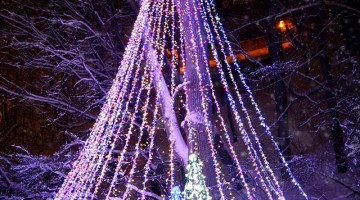For some, the adventure of travelling is to enjoy exotic habitats and wildlife. But for those living in Niagara, you don’t have to travel very far from your own home to enjoy plants that do not naturally grow anywhere else in the country. Plants that are naturally occurring in a region (that is, they were not introduced by settlers) are considered “native.” Plants that are native to the Niagara region evolved here and are adapted to our climate, environmental conditions, and wildlife.
The Niagara region has certain geographical conditions that make it a unique growing environment in Canada. One main reason why some plants that grow here do not grow anywhere else in the country is our proximity to large bodies of water. The Great Lakes, which hold 20% of the world’s freshwater, moderate our climate year-round and increase the humidity in our region. In combination with the wide variety of habitats our region provides (swamps, fields, forests, and the rocky Escarpment) and our southern geographical location, Niagara’s eco-features create great growing conditions for a wide variety of plants.
An example of a Niagara native is the spectacular tulip tree (Liriodendron tulipifera) (main pic). This hardy, attractive tree is in the magnolia family and grows in only a few parts of Ontario. It produces tulip-like blossoms that begin to flower in June. The St. Johns Conservation Area in Fonthill is home to the largest stand of tulip trees in the Niagara peninsula.
Native shrubs include New Jersey tea (Ceanothus americanus), also known as wild snowball. This shrub grows clumps of petite white flowers, and its leaves can be dried to make tea. This plant is essential to the diet of the Mottled Duskywing, a butterfly native to the region, and can be found growing along the Bruce Trail.
But you don’t have to hike to enjoy native plants! Native plants are an ideal addition to your own garden because they are better adapted to our soil and climate. Typically, these kinds of plants require less water and attention than non-native plants, because they are so well-adjusted. The main benefit to native plants, however, is their ability to attract and support local wildlife, such as birds, bees, butterflies, and other beneficial insects. As spring approaches, I will write again on native flowers for those who are interested in incorporating healthy, vibrant flowers into their gardens. But for now, consider adding a Black Cherry tree, a Highbush Cranberry shrub, or Witch Hazel to your garden plan for the spring.
According to the Niagara Parks website, at the time of settlement in the 1700s, the natural vegetation in the Niagara Region included cedar, oak, and an abundance of wild tender fruits including strawberries, gooseberries, raspberries, cherries, plums and grapes. Our region’s natural ability to support tender fruit is likely why it has been such booming business in Niagara all these years later! Wild berries still grow in many Niagara forests. I myself have eaten wild berries from the Short Hills – it was almost magical enjoying wild fruit from a forest I lived near all my life!
There are lots of organizations dedicated to promoting the care and education of Niagara’s natural resources. The Tree Atlas is an interactive map that displays native trees according to region. Wildniagara.com hosts nature walks and other events. Sites such as Friends of Malcomson Eco-Park and Friends of Short Hills Park offer site-specific events and resources, and larger organizations such as the North American Native Plant Society promote large-scale events such as native plant rescues on upcoming building sites.
The Niagara Peninsula Conservation Authority offers a list of nurseries that specialize in native plants if you’re interested in growing them in your own backyard. This page also provides information on their Simply Tree-mendous Challenge, a tree-planting contest between different Niagara municipalities. Consider participating either on your own, as a family initiative, or as a classroom challenge in your school!
If you would like to explore the natural resources of the Niagara region, start by surfing through Niagara Green Belt’s list of Natural Habitats and Features, found here. Each entry contains a description and driving directions to each location.
Do you have any favourite natural spaces in Niagara? What’s your favourite Niagara native plant?










